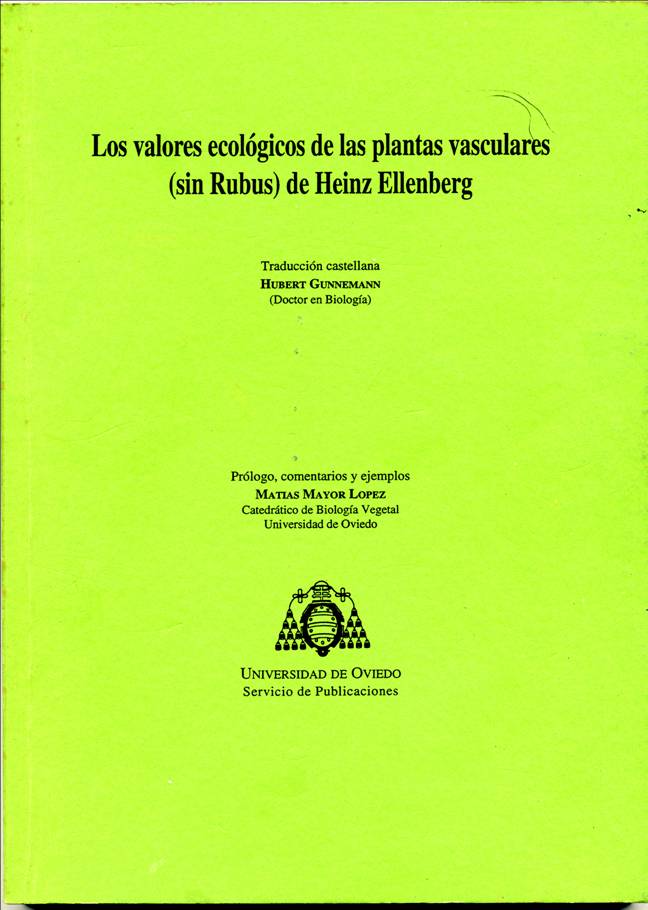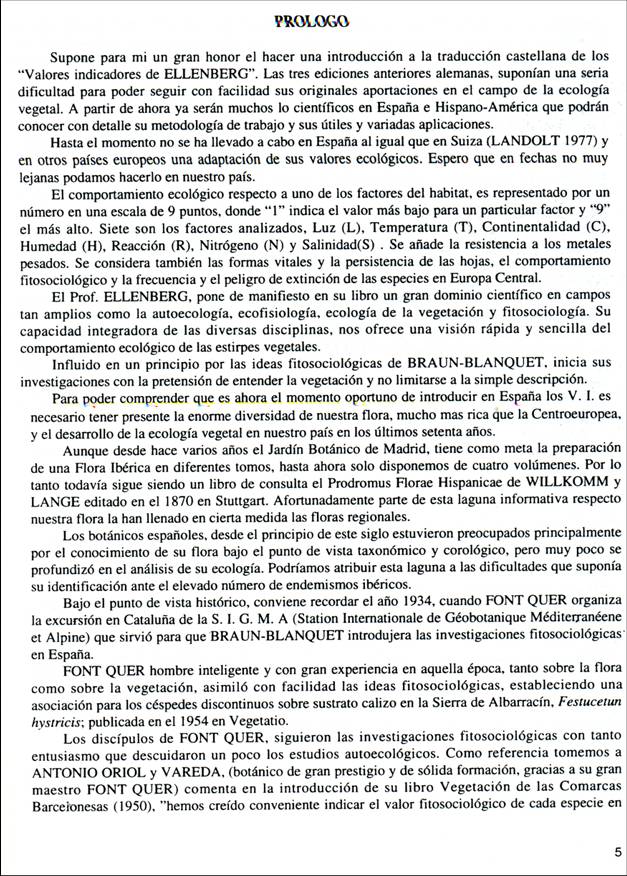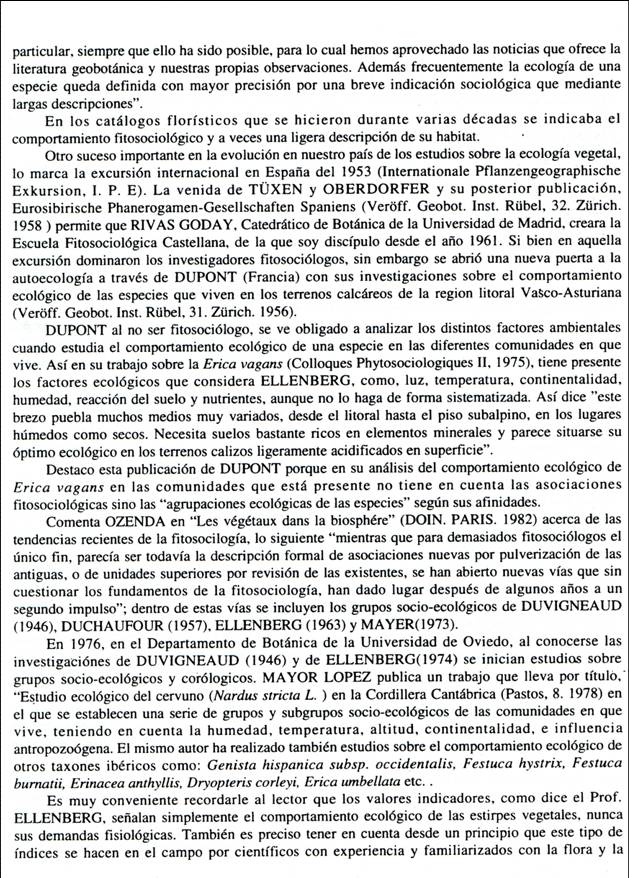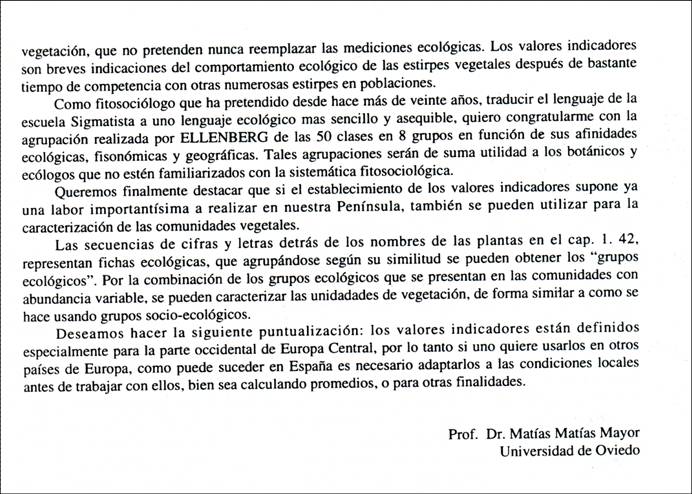
Indicadores ecológicos de Heinz Ellenberg en Español
19 marzo, 2010 Autor: admin
…………….
………………………….
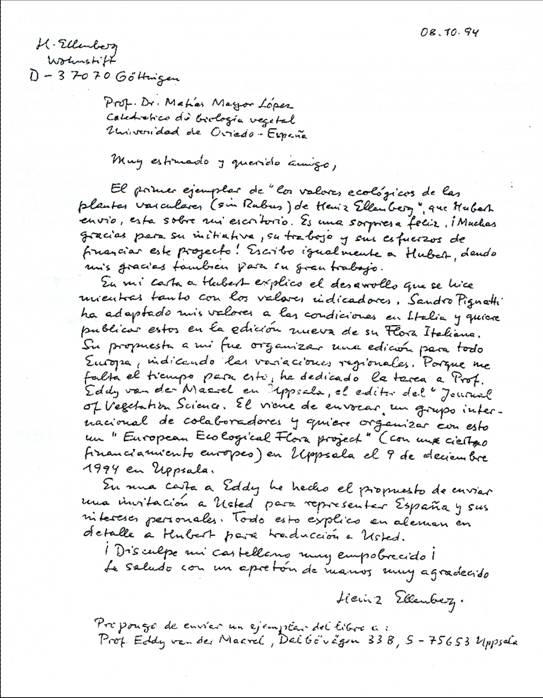
Nota: Mas información sobre la fitosociología en España en las últimas cinco décadas, ver pagina web. » Poore. M. E. D.Etnopaisaje”
Con el Prof .Ellenberg, amigo personal, aprendí mucho, en mi viaje a Alemania y en la correspondencia posterior que mantuve .Me identifiqué con él en su disposición de respectar la libertad científica y de pensamiento. Le manifesté mi preocupación sobre todo, por introducir en España «los grupos sociecológicos», pero respetando al máximo la libertad de mis discípulos, que prefirieron seguir la opinión de la mayoría científica oficial en España.
…………………
HEINZ ELLENBERG, 1913-1997
A very sad news from Germany was the recent death of Heinz Ellenberg, on May 2, 1997 in Goettingen. His scientific works and outstanding personality have touched and influenced several generations of vegetation and plant ecologists, not only in Europe, but also throughout the world.
The fifth edition of his life’s synthesis work (in German), «Vegetation Mitteleuropas mit den Alpen», Eugen Ulmer Verlag, Stuttgart, 1996, had only recently arrived on my desk. His fourth (1986) edition was translated into English and appeared under the title «Vegetation Ecology of Central Europe», Cambridge University Press, 1988. An earlier book in English, «Integrated Experimental Ecology», edited by H. Ellenberg was published by Springer-Verlag in its now well-known «Ecological Studies Series» as Volume 2 in 1971. It dealt with methods and preliminary results of the German contribution to the IBP (International Biological Program), the first internationally coordinated big biological science program. In Germany, this was directed by Heinz Ellenberg and was known as the «Solling Project.» The complete results appeared as a 20-year study in 1986 in an Ulmer book entitled «Oekosystemforschung – Ergebnisse des Solling Projekts 1966-1986», edited by H. Ellenberg, R. Mayer, and J. Schauermann.
I had the great fortune to sit in H. Ellenberg’s introductory botany lectures in 1948/49 at the University of Stuttgart-Hohenheim. At that time, he had just obtained his habilitation as university lecturer and was teaching the course in tandem with the botanical institute’s director, Professor Heinrich Walter. As I later realized, both were impressive teachers, whose lectures and personalities inspired me for the rest of my life. Dr. Ellenberg, at that time, introduced vegetation ecology by field excursions in which we learned how to do releves (vegetation samples). Later, after I had immigrated to Canada in 1952, and when I was inspired by Vladimir J. Krajina to continue my studies with a Ph.D. in forest ecology, I resumed active contact with both, Profs. H. Walter and H. Ellenberg.
One of Ellenberg’s fundamental questions in vegetation ecology was, «what controls the combination of plant species in field communities?» For this, the «Hohenheimer Groundwater Experiment», suggested by H. Walter and carried through by H. Ellenberg, gave a compelling answer. Ellenberg clearly demonstrated the difference between physiological and ecological behaviors of plants, the first relating to the absence of competition, the second to plants growing in competition with other plants. He coined the term physiological optimum and ecological optimum, which helped to clarify the causality of plant distribution patterns in nature.
These and other aspects, such as Ellenberg’s «ecological group concept», were retained in the book Mueller-Dombois/Ellenberg «Aims and Methods of Vegetation Ecology», Wiley and Sons, 1974, which represented the first synthesis of European and Anglo-American approaches to vegetation ecology. The book could be written because of Ellenberg’s prior work, and it undoubtedly contributed to a broader familiarity with Ellenberg’s name among English-speaking ecologists.
Heinz Ellenberg produced over 200 scientific papers, including several books, listed in part in his first «Festschrift», published by the German Ecological Society (Goettingen 1983) at the occasion of his 70th birthday. A second «Festschrift» in honor of his 80th birthday appeared in Phytocoenologia Vols. 23(1993) and 24(1994). Excellent accounts on H. Ellenberg’s professional life and his impact on modern ecology, including ecosystem analysis and landscape ecology as well as the application of vegetation science to agriculture and forestry, are summarized in both his «Festschrifts» by Wolfgang Haber, Gisela Jahn, and Otti Wilmanns.
Heinz Ellenberg’s great contributions were increasingly and repeatedly recognized. For example, he was invited by the British Ecological Society to give the prestigious «Tansley Lecture» in 1977, which was subsequently published with the title «Man’s influence on tropical mountain ecosystems in South America» in Journal of Ecology 67: 401-416, 1979. Moreover, he received honorable degrees from four universities: Dr. agr. h.c. (Munich), Dr. rer. nat. h.c. (Zagreb), Dr. phil. nat. h.c. (Muenster), and Dr. phil. h.c. (Lueneburg).
His major works, the five successive editions concerned with the «Vegetation Ecology of Central Europe», were always dedicated to his closest and strongest supporter, his wife of 60 years, Charlotte Ellenberg, herself a professional geographer and partner in his life’s work. I cannot conclude this short obituary without thinking of her unimaginable suffering by losing her husband, the man who will continue to live in the memory of all those who were touched by his outstanding personality.
- Dieter Mueller-Dombois
Kailua, Hawaii
June 26, 1997
- ………………………………………
